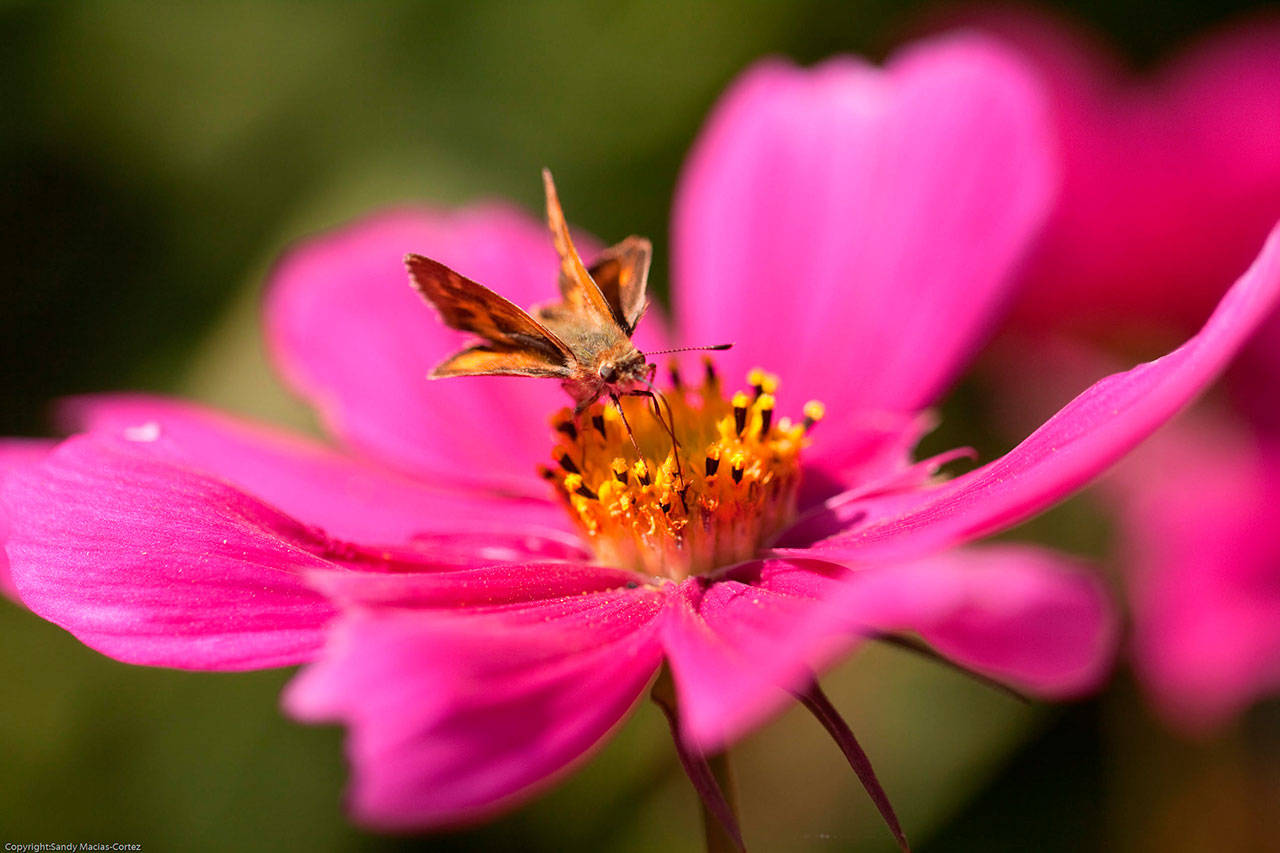What’s all the buzz about pollinators? Why do we need them? Pollinators are bees, butterflies, birds, moths, bats and some insects. They pollinate many of our plants to reproduce flowers, fruit and food crops. Pollinators are critical for our food supply and help sustain our ecosystem.
Despite their importance, pollinator populations are declining at an alarming rate. This is due to misuse of chemicals, disease, and a severe loss in their feeding and nesting habitats. So what can be done to provide for and protect these essential garden workers?
Planting a pollinator garden in a sunny area is an excellent way to entice them into your yard. No garden is too small or too large to attract a variety of pollinators where food, water, and nesting habitats are essential for their survival. By creating spaces that provide for their needs, pollinators will multiply and flourish. It is important to avoid pesticides to maintain a healthy habitat for all pollinators.
Bees, butterflies, and other pollinators require nectar as their primary source of food. In planning the garden, choose a diversity of plants, including many natives, with bloom season in mind. These will provide food from early spring through to late fall. The presence of native plants provides a sustainable food source and will increase the abundance of pollinators.
It takes a lot of energy for bees and butterflies to find a flower they like. To increase their pollination efficiency, it is best to group the same flowers in mass. Cultivated flowers and double-flowers are not always better because they may not provide sufficient pollen and nectar to support these populations.
Choose plants that have different colors and shapes. Bumble bees, butterflies, moths, and hummingbirds have long tongues and can probe deep tubular flowers such as coast penstemon and lupines. For other pollinators and short-tongue bees, grow smaller flowers such as asters and daisies.
There are many nonnative and ornamental flowers that provide food for pollinators such as sweet alyssum and calendula. Garden herbs, such as marjoram, basil, and rosemary, also provide food. When selecting nonnative plants for the garden, choose heirloom varieties instead of highly ornate varieties.
To maximize butterfly populations habitat is important. Butterflies need host plants to lay their eggs. Our native Pacific Ninebark attracts butterflies and their larvae. Placing host plants near their favorite nectar plants will keep butterflies in the garden.
Butterflies also need sunshine and warmth to fly. Provide rocks or bricks to give these delightful creatures a place to bask in the sun and absorb the heat.
Since most butterflies are weaker flyers than other insects, they need protection from the wind. If a windbreak is needed in the garden, plant nectar-producing plants that provide both food and shelter such as native oceanspray. Trellises covered in clematis or honeysuckle also make excellent barriers.
All pollinators need a reliable source of water. Foraging honeybees use water to dilute honey and to cool the hive. Mason bees need mud to cap their nesting holes. Butterflies extract salt and minerals from damp puddles. Add a birdbath, a shallow container, or muddy puddles to provide drinking opportunities for pollinators.
There are many ways to provide a variety of habitats for pollinators. Non-mowed areas, leaf litter, fallen tree branches and trunks all provide nesting sites for overwintering bees and butterflies.
Everyone is aware of the serious threat to the honey bee, but all pollinators are essential. Tune in to next week’s “Get it Growing” column to learn how to garden for a variety of hard working — but perhaps under-appreciated — native bees.
Loretta Ferguson is a Clallam County Master Gardener. She is an area supervisor who enjoys working in the Pollinator Garden at the Woodcock Demonstration Garden.
Examples of nectar plants for butterflies and moths
Bitter cherry, Prunus emarginata
Everlasting pea, Lathyrus latifolius
Goldenrod, Solidago sp.
Joe-Pye weed, Eutrochium maculatum
Mint, menthe sp.
Milkweed, Asclepias
Wild lilac, Ceanothus sp
Examples of larvae host plants
Kinnikinnick, Arctostaphylos uva-ursi
Nootka rose, Rosa nutkana
Stinging nettle, Urtica dioica
Shore pine, Pinus contorta
Thimbleberry, Rubus parviflorus
Vine maple, Acer circinatum
Wild strawberry, Fragaria chiloensis


